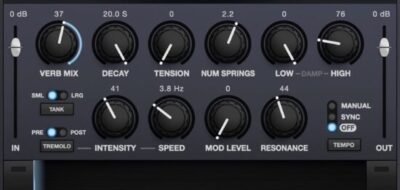Imagine listening to the early demo of a chart-topping song like Adele’s “Rolling in the Deep.” Initially, it may sound unrefined, with uneven levels and raw edges. However, through the meticulous processes of mixing and mastering, this rough mix transforms into the polished gem we all know. This transformation is a testament to the expertise of mixing and mastering engineers who play a crucial role in the production process. This article explores the journey from a rough mix to a final, ready-for-release track, highlighting the roles of these professionals, common challenges, and solutions.
The Initial Rough Mix
Definition and Importance
A rough mix is the initial version of a song, comprising all recorded elements placed together with basic levels and panning. It serves as the blueprint for the final mix, allowing artists and producers to envision the overall direction of the track. The rough mix is essential because it captures the raw energy and initial ideas that will be refined in subsequent stages.
Common Elements
Typically, a rough mix includes individual recorded instruments and various sonic elements such as vocals, guitars, drums, and synths. These components are arranged without extensive processing, providing a clear picture of the track’s potential but often lacking the polish and balance of a finished product.
The Role of Mixing Engineers
Balancing the Mix
Mixing engineers are tasked with balancing the various elements of a track. This involves adjusting volume levels, panning instruments across the stereo field, and applying equalization (EQ) to ensure each element occupies its own space in the frequency spectrum. Creating space and separation for each element is vital to achieving a clear and cohesive mix.
Enhancing Sonic Elements
To enhance individual elements, mixing engineers use effects such as reverb, delay, and compression. Reverb can add depth and space, delay can create rhythmic complexity, and compression can control dynamics and add punch. Addressing issues like muddiness and frequency clashes is essential to maintain clarity and definition.
Challenges in the Mixing Stage
Common Problems
Common problems in the mixing stage include phase cancellation, excessive reverb, and imbalanced frequencies. Phase cancellation occurs when two similar audio signals interfere with each other, leading to a thin or hollow sound. Excessive reverb can muddy the mix, while imbalanced frequencies can make certain elements overpower others.
Strategies to Address Problems
Mix engineers employ various strategies to resolve these issues. Techniques like phase alignment, reverb damping, and EQ adjustments are used to ensure a balanced and clear mix. For example, using high-pass filters to remove unnecessary low frequencies can help reduce muddiness.
Case Studies
A notable example is the mixing process of Michael Jackson’s “Billie Jean.” Initially, the rough mix had significant issues with clarity and balance. Through careful EQ, compression, and reverb adjustments, the mixing engineer managed to transform it into a polished, iconic track.

The Art of Audio Mastering
Mastering Engineers’ Role
Mastering engineers are responsible for the final polish of a track. Unlike mixing, which focuses on individual elements, mastering enhances the overall sound of the final mix. This stage is crucial for ensuring that the track sounds consistent and professional across all playback systems.
Key Techniques
Mastering involves techniques such as EQ, compression, and limiting. EQ is used to balance the overall tonal quality, compression to control dynamics, and limiting to increase loudness without causing distortion. Maintaining dynamic range and loudness consistency is critical to ensure the track is both powerful and clear.
Transforming the Final Mix
Final Mix Preparation
Preparing the final mix for mastering involves several steps. Mixing engineers must ensure that the mix is balanced and free from clipping. Collaboration between mixing and mastering engineers is vital to address any potential issues and ensure a smooth transition to the mastering stage.
Polishing and Refinement
During mastering, the engineer listens critically to the track, making subtle adjustments to enhance its overall sound. This process ensures that the track translates well across different playback systems, from high-end studio monitors to consumer earbuds.
The Collaborative Process
Artists and Producers
Artists and producers play a significant role in the mixing and mastering process. Their vision and feedback are crucial in shaping the final product. A collaborative approach ensures that the track aligns with the artist’s creative intent while meeting technical standards.
Communication and Feedback
Clear communication between mixing engineers, mastering engineers, and artists is essential for effective collaboration. Providing detailed feedback and being open to iterative improvements help achieve the desired sound. Regular check-ins and revisions ensure that the final track meets everyone’s expectations.
Additional Elements to Consider
Creative Decisions
Creative choices significantly impact the final sound of the track. Balancing artistic vision with technical precision is a delicate process. Decisions such as instrument placement, effect usage, and dynamic control all contribute to the track’s character and emotional impact.
Technological Tools
Modern technology plays a crucial role in mixing and mastering. Essential tools and software include digital audio workstations (DAWs), plugins for EQ, compression, and reverb, and advanced metering tools for precise control. These technologies help engineers overcome common challenges and achieve professional results.
In Conclusion
The process of transforming rough mixes into polished, ready-for-release tracks is a complex and meticulous one. Mixing and mastering stages are crucial in this transformation, with mixing engineers balancing and enhancing sonic elements and mastering engineers providing the final polish. Collaboration and communication among all parties involved are essential for achieving the best possible outcome. Investing time and resources into the mixing and mastering process is vital for any serious artist or producer. The impact of a well-polished track on its success and audience reception cannot be overstated. By understanding and embracing these processes, you can elevate your music from raw recordings to refined masterpieces that stand out in the competitive music industry.







